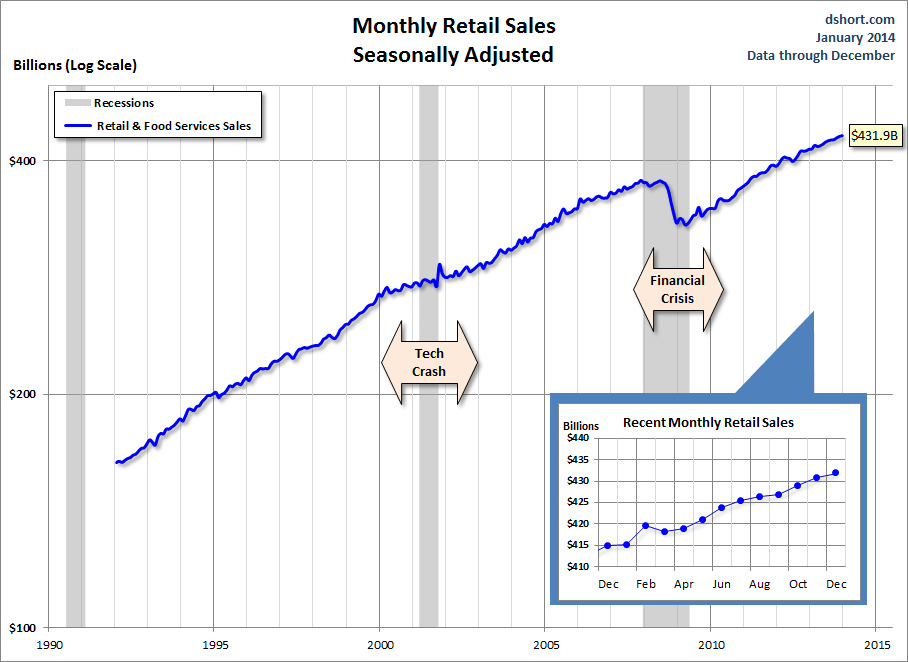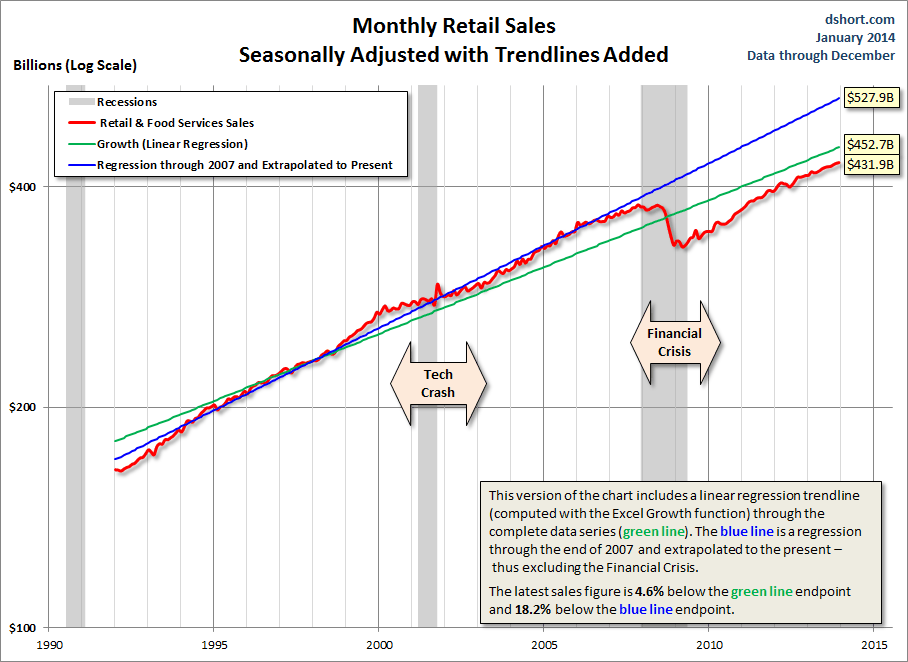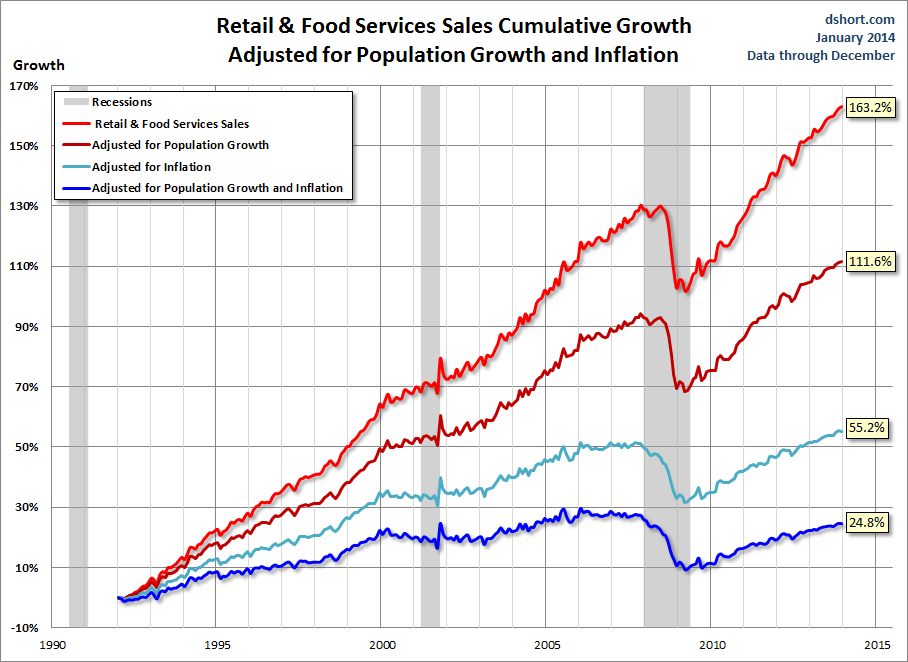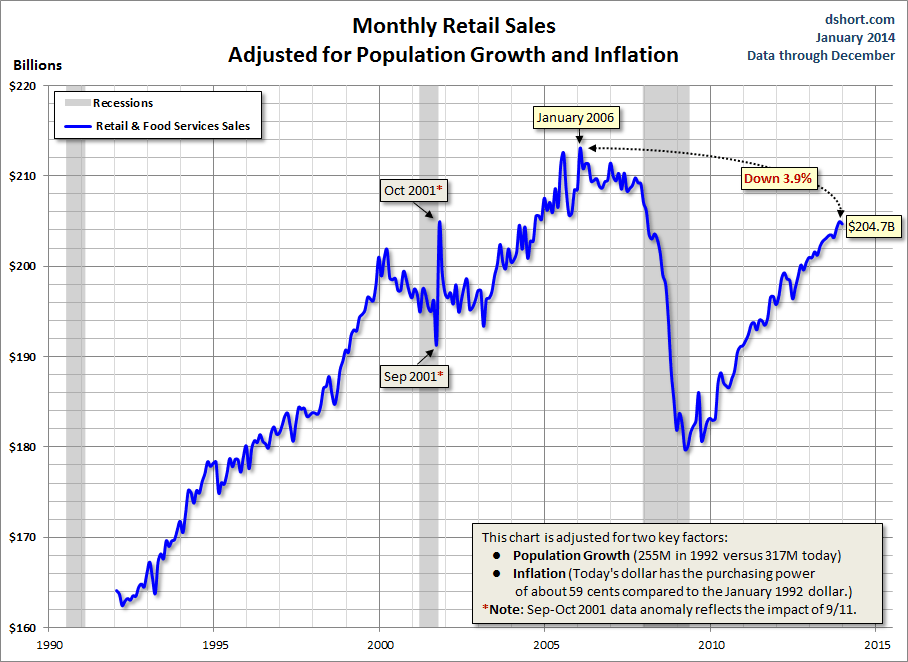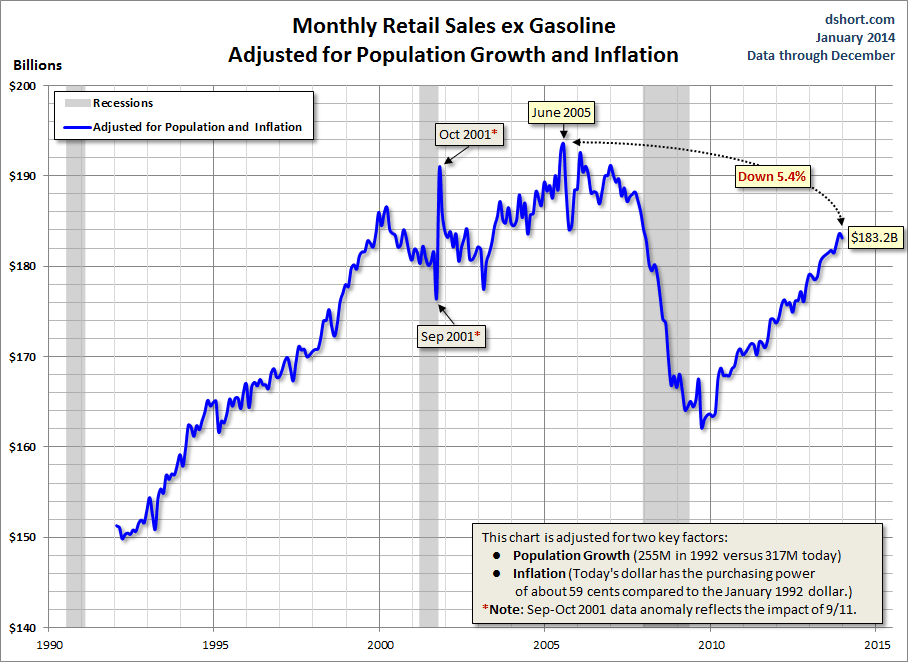The Advance Retail Sales Report on Tuesday showed that sales in December rose 0.2% month-over-month and 4.1% year-over-year, as I reported in my real-time update.
With today's release of the Consumer Price Index, we can now dig a bit deeper into the "real" data, adjusted for inflation and against the backdrop of our growing population.
The first chart shows the complete series from 1992, when the U.S. Census Bureau began tracking the data in its current format. I've highlighted recessions and the approximate range of two major economic episodes.
The Tech Crash that began in the spring of 2000 had relatively little impact on consumption. The Financial Crisis of 2008 has had a major impact. After the cliff-dive of the Great Recession, the recovery in retail sales has taken us (in nominal terms) 14.2% above the November 2007 pre-recession peak.
Here is the same chart with two trendlines added. These are linear regressions computed with the Excel Growth function.
The green trendline is a regression through the entire data series. The latest sales figure is 4.6% below the green line end point.
The blue line is a regression through the end of 2007 and extrapolated to the present. Thus, the blue line excludes the impact of the Financial Crisis. The latest sales figure is 18.2% below the blue line end point.
We normally evaluate monthly data in nominal terms on a month-over-month or year-over-year basis. On the other hand, a snapshot of the larger historical context illustrates the devastating impact of the Financial Crisis on the U.S. economy.
The "Real" Retail Story: The Consumer Economy Remains at a Recessionary Level
How much insight into the US economy does the nominal retail sales report offer? The next chart gives us a perspective on the extent to which this indicator is skewed by inflation and population growth. The nominal sales number shows a cumulative growth of 163.2% since the beginning of this series. Adjust for population growth and the cumulative number drops to 111.6%. And when we adjust for both population growth and inflation, retail sales are up only 24.8% over the past two-plus decades.
Consider: Since January 1992, the U.S. population has grown about 24% while the dollar has lost about 41% of its purchasing power to inflation. Retail sales have been recovering since the trough in 2009. But the "real" consumer economy, adjusted for population growth is still in recession territory — 3.9% below its all-time high in January 2006.
As I mentioned at the outset, month-over-month retail sales were up 0.2%. However, gasoline prices can act as a tax on economic growth: The more we spend on gasoline, the less we have to spend on other goods. Conversely, when gas prices fall, there's more money for other purchases. With this concept in mind, let's look at the real, population-adjusted retail sales excluding gasoline.
By this analysis, adjusted retail sales ex gasoline was up 0.1% in December from the previous month and up 4.5% year-over-year. However, it's down 5.4% from its all-time high in June 2005.
The Great Recession of the Financial Crisis is behind us, a close analysis of the adjusted data suggests that the recovery has been frustratingly slow. The sobering reality is that, in "real" terms — adjusted for population growth and inflation — consumer sales remain at the level we saw about three months into the last recession.

